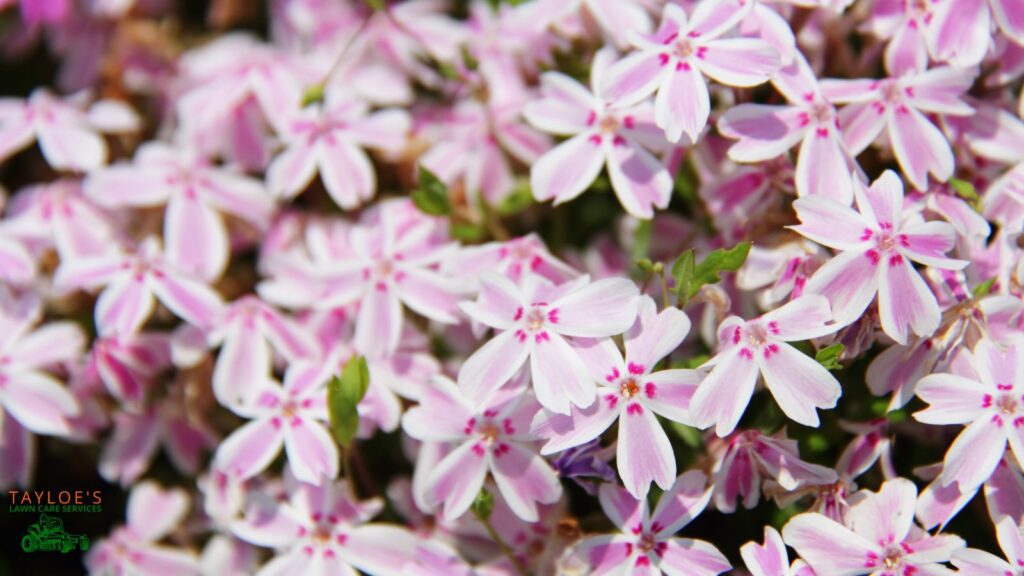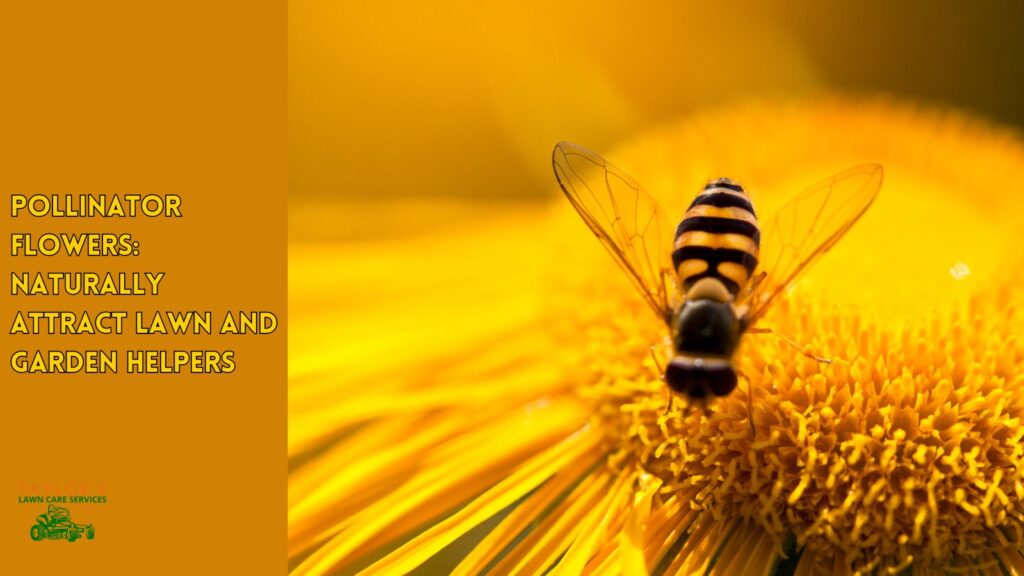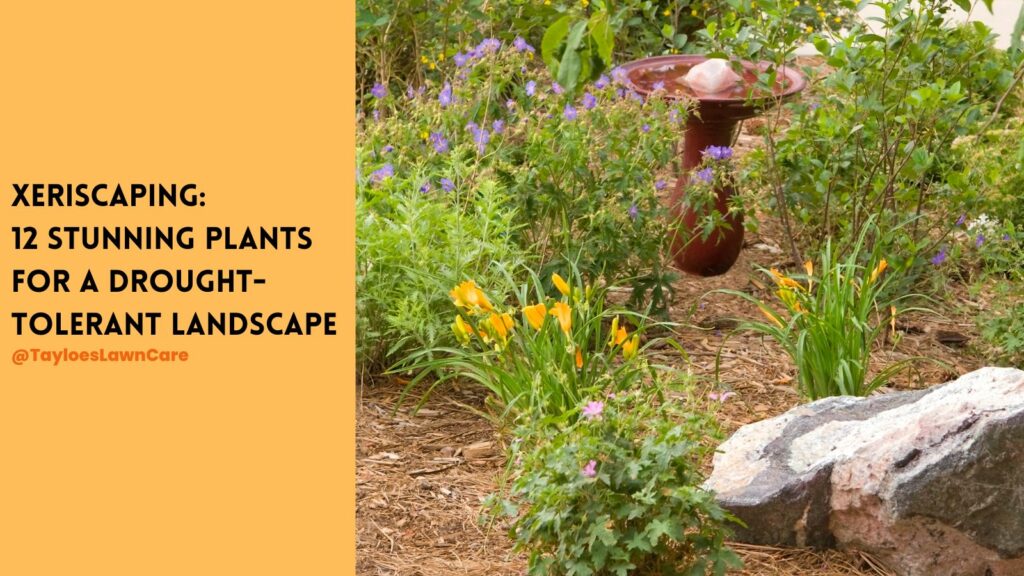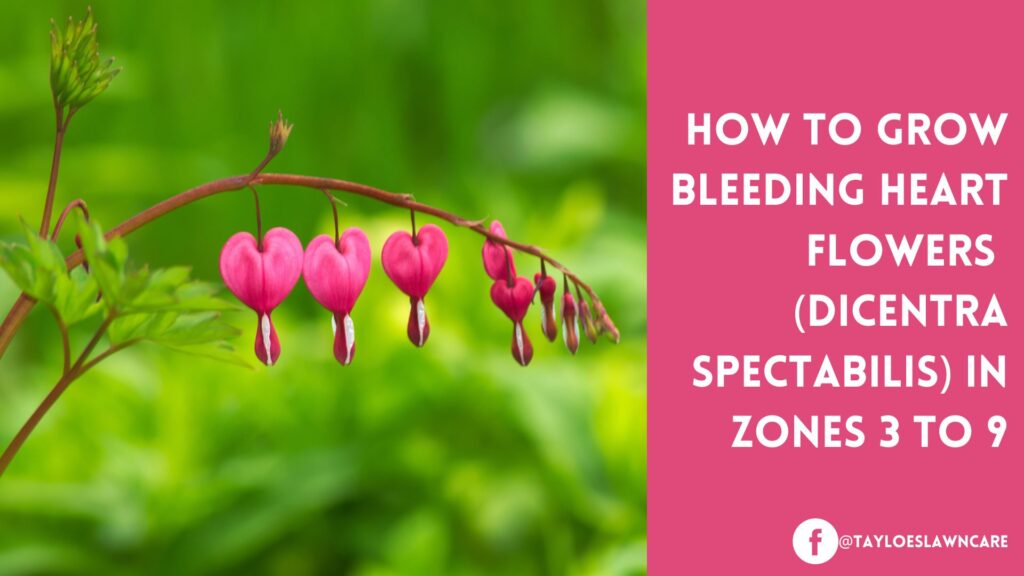Last Updated on: 9th February 2025, 07:59 am
Need a wonderful groundcover?
Are you curious about the vibrant, ground-covering wonder: Creeping Phlox?
You’re in the right place! This charming perennial, bursting with star-shaped blooms, is a garden enthusiast’s dream for adding a splash of color to any landscape.
But how do you ensure it thrives in your garden?
In this post, we’ll explore the ins and outs of Creeping Phlox – from selecting the perfect spot to plant it, to maintaining its stunning beauty season after season.
Whether you’re looking to create a breathtaking carpet of color or just want to add some low-maintenance flair to your garden, we’ve got you covered with practical tips and creative ideas.
Let’s dive right in and unlock the secrets of successfully growing Creeping Phlox!
Meet Creeping Phlox: Your Garden’s Colorful Companion
Creeping Phlox (Phlox stolonifera) is like the rainbow’s footprint in the plant world.
A member of the Polemoniaceae family, it’s often fondly referred to as “moss phlox” or “mountain phlox”. Picture this: a carpet of soft green foliage bursting into a spectrum of pinks, purples, whites, and blues come spring.
Standing just 6 inches tall, these vibrant flowers signal warmer days ahead.
It’s a natural spectacle, really, with its blooming season stretching from April to June.
Native to the Eastern U.S. woodlands, Creeping Phlox is accustomed to rocky and sandy soils. It thrives in well-drained environments, showing remarkable resilience.
- Botanical Name: Phlox stolonifera
- Common Name: Star rock phlox, Creeping phlox, Moss phlox
- Family: Polemoniaceae
- Plant Type: Herbaceous, perennial
- Height: 6-12 in. tall
- Mature Size: 9–18 in. wide, 6–12 in. tall
- Bloom Time: Spring, summer
- Flower Colors: White, Pink, Purple
- Soil Type: Loamy, well-drained
- Soil pH: Alkaline, neutral, acidic
- Sun Exposure: Full, partial
- Hardiness Zones: 5 – 9 (USDA)
- Native Area: North America
Planting Success: A Step-by-Step Guide to Thriving Creeping Phlox
Step 1: Choose the Right Location
Just like many other plants, phlox has its unique preferences when it comes to its growing environment.
- Light: This plant loves basking in full sun to partial shade. Remember, too much shade can impede flower production, so pick a spot that gets about 6-8 hours of direct sunlight daily.
- Soil: Creeping phlox craves well-drained, organic matter-rich soil with a slightly acidic to neutral pH, but can also tolerate a slightly alkaline soil.
- Moisture: While mature plants can handle a bit of drought, they generally do best in moderately moist soil.
Aim to water them weekly unless it rains.
Step 2: Prepare the Soil
To guarantee the flourishing of your Creeping Phlox, be sure to prepare the soil properly.
- Start by getting rid of any weeds from the planting location to prevent competition for nutrients and water. Carefully remove all the weeds, ensuring you also get their roots out, as this helps prevent them from regrowing and causing issues later.
- Next, loosen the soil. Use a tiller or garden fork to turn the soil to a depth of about 12-15 inches. This will not only aerate the soil but also make it easier for the phlox roots to penetrate and establish.
- Mix in compost or aged manure to enrich the soil with essential nutrients. It also helps the soil structure, enhancing drainage and aeration.
- Check and adjust the pH if necessary. Apply soil sulfur, chelated iron, or Aluminum Sulfate if your soil pH is too high–to lower it. If the pH is too low, elevate it by adding pelletized lime.
The ideal soil pH should fall between 5.5 and 8.0
Step 3: Plant Your Creeping Phlox
Planting phlox is straightforward. Just ensure ample space for root expansion and irrigate generously immediately after planting.
Plant in early summer spring, or autumn in mild locations.
- Dig a hole that’s twice as wide as the root ball of your phlox, then gently place it (the plant) into the hole. Ensure the root ball’s top is on the same level with the soil around it, so it doesn’t rot.
- Fill back the hole with the surrounding soil, making sure not to damage the roots.
- Water deeply and regularly for the next few weeks until the plant is well-established.
- Lastly (this is optional), mulch around the plant’s base for enhanced moisture retention and discourage weeds from growing.
Note: If planting more than one plant, be sure to adequately space the seedlings (15-18 in. apart) to allow them sufficient room to spread.
Keep It Flourishing: Essential Care Tips for Lush Creeping Phlox
Creeping Phlox is, generally, a low-maintenance plant. All it craves is basic care for healthy growth and vibrant blooms.
- Water: Phlox requires consistent moisture to thrive. Irrigate deeply once every week and adjust as needed depending on the weather conditions.
Allow the soil to dry a bit between waterings to avoid overwatering.
- Fertilize: Feed with a slow-release fertilizer once each year–in the spring–to help foster robust growth and vibrant blooms all season long.
- Prune: Though optional, pruning your phlox helps prevent early seeding and encourages new growth.
Once the plant is done blooming, trim back the foliage for a tidier appearance. This also promotes denser foliage, enhancing the phlox’s charm as a ground cover.
- Divide: After a few seasons, your phlox will be mature and overgrown. Divide the roots to start new plants, allowing the mother plant to rejuvenate and enjoy more growth space.
- Temperature and Humidity Management: Though adaptable to both warm and cool climates, extreme heat combined with high humidity can, at times, stress phlox plants.
Ensure proper ventilation by adequately spacing the plants and avoiding crowded locations.
Also mulch around the plant’s base to help regulate temperature and retain moisture.
Exploring Phlox Varieties: Discovering Your Ideal Selection
Creeping phlox comes in numerous appealing shades, varieties and cultivars, allowing you to select the perfect fit for your landscape.
Let’s explore some of the popular species:
- ‘Emerald Blue’: This variety showcases stunning blue flowers, creating a serene, ocean-like effect in your garden.
- ‘Candy Stripe’: Known for its pink and white striped petals, it adds a whimsical and sweet touch, reminiscent of peppermint candies.
- ‘Red Wings’: For a pop of bold color, ‘Red Wings’ offers bright red blossoms, making it a standout choice for any landscape.
- ‘Fort Hill’: This cultivar is loved for its classic pink flowers, evoking a traditional, charming garden aesthetic.
- ‘White Delight’: With its pure white flowers, ‘White Delight’ is perfect for creating a bright, peaceful space or complementing more colorful varieties.
- ‘Purple Beauty’: As the name suggests, it produces rich purple flowers, adding a regal and dramatic flair to your garden.
With so many captivating varieties of Creeping Phlox to choose from, each adding its unique charm to your garden, you might be wondering how to incorporate these floral gems into your landscape effectively.
Let’s transition from the array of colors and types to the exciting part – using these vibrant ground covers to transform your garden into a picturesque paradise.
Garden Makeover: Using Creeping Phlox for Stunning Landscapes
Phlox isn’t just a pretty face; it’s a real game-changer when it comes to landscaping.
Here are some creative ways you can use this vibrant ground cover to turn your garden into a breathtaking retreat.
- Colorful Borders: Picture a ribbon of vivid color along your garden paths or flower beds. Plant Creeping Phlox along the edges to create natural, lively borders. As they bloom, you’ll get a stunning display of colors that frame your garden beautifully.
- Rock Gardens and Retaining Walls: These plants are perfect for rock gardens or cascading over retaining walls. Imagine the striking contrast of delicate phlox blooms against rugged rocks – it’s a visual treat!
The vibrant colors of Creeping Phlox will add an enchanting touch to any rocky landscape.
- Slope and Hill Coverage: Got an awkward slope or hill in your yard? Creeping Phlox is a fantastic solution.
It not only adds color but also helps with erosion control. Watch as these plants transform a tricky area into a blossoming slope of color.
- Under Trees and Around Shrubs: Utilize the shade-tolerant nature of Creeping Phlox by planting them under trees or around shrubs.
Their blooms add a pop of color to these typically green areas, creating layers in your garden’s look.
This is a great way to brighten up those shaded spots in your garden.
- Stepping Stone Companions: If you have a stepping stone path, let Creeping Phlox grow around and between the stones for a whimsical, fairy-tale garden feel.
It softens the look of the stones and adds a burst of life.
- Container Gardening: Don’t have much space? Creeping Phlox thrives in containers too! They can spill over the sides of pots and hanging baskets, adding a vertical element to your garden or balcony.
- Mixed Flower Beds: Combine Creeping Phlox with other perennials for a varied and dynamic flower bed.
Their low growth habit makes them excellent ground covers beneath taller plants, providing a lush, full look to your garden.
Now, let’s explore how to propagate these beauties so you have even more to enjoy. .
Propagate with Ease: Simple Techniques for Multiplying Your Phlox
Propagation is a simple and rewarding process, allowing you to multiply your vibrant ground cover without the need for constant new purchases.
It’s commonly done primarily through division and stem cuttings.
Division
Divide the plant in fall or early spring when it’s not actively growing, as this minimizes stress on the plant and aids in a smoother transition–and better establishment in its new environment or condition.
Gently dig up your Creeping Phlox, ensuring you get a good amount of root system with each section.
Look for natural divisions in the plant and use your hands or a clean, sharp knife to separate them into smaller clumps.
After dividing the plant, be sure to prepare your soil before replanting. Follow the steps outlined above.
Stem Cuttings
This is another great way to propagate phlox plants, and it’s best done in late spring or early summer when the plants are actively growing, producing new shoots.
Choose robust, non-flowering stems and cut into sections about 4-6 inches long, ensuring every cutting carries at least two sets of leaves.
Next, prepare your well-draining potting mix by combining equal parts of perlite, peat moss, and vermiculite.
Transfer the potting mix into small trays or pots, making sure to leave some space at the top–about an inch.
Trim off the bottom leaves of each cutting, keeping only the uppermost leaves. This minimizes moisture loss and promotes root growth.
Apply a rooting hormone in powder or gel form to the base of each cutting to stimulate root development.
(Note: For gel and liquid hormones, be sure to check the packaging label to see whether it’s a concentrate or ready-to-go mix. If concentrated, dilute with water as per the instructions.
Dip the base of your cutting into the prepared hormone solution, submerging it briefly for just a few seconds; prolonged exposure can harm the plant).
Plant the cuttings in your prepared potting mix, ensuring they’re buried approximately one inch deep.
Carefully press the soil around the cuttings to establish solid contact and stability.
Once done, move the trays or pots to a lit location with bright indirect light–a greenhouse or a windowsill.
Mist the cuttings regularly to keep them moist and not waterlogged, as excessive moisture can trigger rot.
After a few weeks, roots will form from the cuttings, and new growth will start appearing from the upper leaves.
Transplant directly into the garden or into individual pots once the cuttings develop a strong root system.
Choose a spot with full sun, partial shade and well-drained soil. Refer to the growing requirements mentioned earlier.
Managing Pests and Diseases: Keeping Your Creeping Phlox Healthy
Though hardy, phlox plants can occasionally be troubled by certain pests and diseases.
Pests
- Aphids: These tiny, sap-sucking insects can weaken the plants. They often appear in clusters, so if you spot them, simply spray them with insecticidal soap or introduce natural predators like ladybugs.
- Spider Mites: If you notice yellowing and dieback of foliage, spider mites might be the culprits. Blast the leaves with a forceful stream of water or apply insecticidal soaps to combat the issue.
Also, always keep your plants well-watered and maintain humidity to deter them, as they tend to enjoy dry, hot conditions.
Diseases
- Powdery Mildew: This appears as a white powdery coating on leaves and stems, especially in humid conditions. Enhance air circulation around the plants and avoid watering from above.
- Stem Rot: Excessive moisture and poor drainage can lead to stem rot. Avoid overwatering and ensure your soil is well-drained.
- Leaf Spot: This disease causes brown or black spots on leaves. Remove affected leaves and enhance airflow around your plants.
Phlox FAQs: Expert Answers to Your Questions
Before we wrap up, let’s answer a few frequently asked questions.
How long does creeping phlox bloom?
Creeping phlox typically puts on its colorful show for about three to four weeks in spring.
The exact timing can vary depending on your local climate and weather conditions, but generally, you can expect a lovely bloom from early to late spring.
Is creeping phlox a good plant?
Absolutely! Creeping phlox is a fantastic plant for ground cover. It’s low-maintenance, drought-tolerant once established, and offers a gorgeous blanket of flowers.
Plus, it’s great for controlling erosion on slopes and beautifying rocky areas.
What is the difference between phlox and creeping phlox?
Well, ‘phlox’ is a bit of an umbrella term for several species, but typically, when people say ‘phlox’, they mean the taller, upright varieties like garden phlox.
Creeping phlox, on the other hand, is a low-growing, ground-cover species. It spreads out along the ground and is much shorter than the upright types.
Does phlox grow fast?
Creeping phlox grows fairly quickly. Once established, it spreads and covers ground efficiently, making it a great choice for filling in bare spots.
Upright phlox varieties also grow fast and can reach their full height within a single growing season.
What does creeping phlox look like when not in bloom?
When it’s not showing off its springtime blooms, creeping phlox still maintains a pretty appearance.
It has a mat-forming habit with small, needle-like leaves that are evergreen in many climates.
These leaves form a dense, lush carpet of green, making it an attractive ground cover throughout the year.
The foliage is fairly low to the ground, typically no more than a few inches tall.
So, even when it’s not in its flowering glory, creeping phlox keeps your garden looking green and full.
Where is the best place to plant creeping phlox?
Creeping phlox loves full sun to partial shade and well-drained soil. It’s perfect for sunny borders, rock gardens, or slopes.
Since it’s a ground cover, it also works well to plant around or in front of taller flowers, adding a layer of color to your garden.
What to pair with creeping phlox?
Creeping phlox pairs well with other sun-loving perennials like daylilies, sedum, or lavender.
For a layered look in your garden, you can also combine it with taller plants like irises or tulips. Its vibrant flowers create a beautiful contrast and texture mixed with these companions.
Ahh…Too much info, right?
But Now You’re a Master of Creeping Phlox…
Imagine stepping into your garden, where a Creeping Phlox carpet transforms into a vibrant oasis. This isn’t just a dream; it’s your new reality waiting to happen.
With every delicate bloom, Creeping Phlox brings a piece of nature’s serenity right to your doorstep.
Picture the envy of your neighbors as they admire the sea of colors weaving through your garden. You’ve got the power to create this enchanting scene.
Don’t just sit back; let the dazzling hues of Creeping Phlox ignite your gardening passion.
Remember, a lush, blooming garden is more than just pleasing to the eye—it’s a sanctuary for your soul.
So, why wait? Grab those gardening tools and let Creeping Phlox work its magic in your life today!
Need help with tending your garden beds or lawn care in Bertie County or Hertford County, NC? Connect with Tayloe’s Lawn Care Services today @ 252.287.3376.
Author Profile

- Maureen Abuor
- Maureen Abuor is a professional content marketing strategist and SEO strategist, with particular knowlege of creating landscaping and gardening content that informs and delights her audience. When she's not working, she's a busy mother of three precious little ones and child of God.
Latest entries
 Lawn CareApril 29, 2025Best shady area grass seed for Eastern NC
Lawn CareApril 29, 2025Best shady area grass seed for Eastern NC GardeningApril 15, 2025How do I make organic soil for the garden?
GardeningApril 15, 2025How do I make organic soil for the garden? Flower GardenMarch 7, 2025What are wave petunias?
Flower GardenMarch 7, 2025What are wave petunias? Flower GardenMarch 3, 202520 Full-sun annuals for your spring and summer garden
Flower GardenMarch 3, 202520 Full-sun annuals for your spring and summer garden










